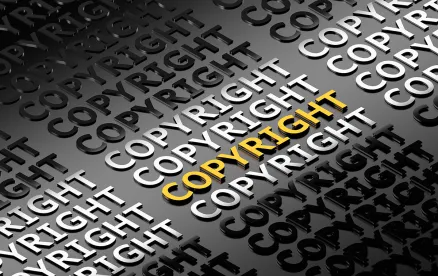On May 18th, the Supreme Court handed down its much‑anticipated opinion in Andy Warhol Foundation for the Visual Arts, Inc. v. Goldsmith. We’ve tracked the progress of this case through the trial court, Second Circuit, and Supreme Court.
The case concerns whether the Andy Warhol Foundation violated a copyright held by photographer Lynn Goldsmith when it licensed a Warhol work called Orange Prince, based on Goldsmith’s photo, to Condé Nast for use on the cover of Vanity Fair magazine. Goldsmith’s photo of Prince was the basis of a series of silkscreen portraits and drawings by Warhol known as the Prince Series. The work at issue was created without Goldsmith’s knowledge or consent. She received none of the $10,000 licensing fee paid to the Warhol Foundation for use of the image.
Writing for the majority, Justice Sonia Sotomayor affirmed the decision of the Second Circuit and held that the Foundation’s licensing of Orange Prince to Condé Nast was not a fair use of Goldsmith’s photograph. The Court was careful to limit its decision in two important ways: First, it examines only the first of copyright law’s four fair use factors, and second, it decides the fair use question onlyas to the licensing of the work – not as to Warhol’s creation of the Prince Series itself. But despite its limited scope, the outcome is a victory for Goldsmith and other artists whose works are used without authorization as references or foundations for new works.
The fair use factor at the center of the court’s decision concerns “the purpose or character of the use, including whether such use is of a commercial nature of is for nonprofit educational purposes.” 17 U.S.C. §107. The Supreme Court held in Campbell v. Acuff‑Rose Music, Inc., that a use is “transformative,” and thus may be fair, when it “alter[s] the first [work] with new expression, meaning, or message.” Id. at 579. However, the Court clarified that the transformativeness inquiry is one of degree, and that merely adding new expression to a work is not sufficient to render it a transformative use. Otherwise, this factor would swallow artists’ exclusive rights to create derivative works. In the Court’s view, licensing Orange Prince to Condé Nast was not a transformative use of the work because Goldsmith, too, has licensed her photographs of Prince to magazines. Additionally, the licensing was clearly a commercial use of the work. Even though Warhol’s Orange Prince undoubtedly added new expression to Goldsmith’s original photograph, this was not enough to overcome the substantially similar purpose and commercial nature of the Foundation’s use.
Justice Kagan’s dissent strongly criticizes the majority’s fair use analysis and considers it in opposition to the Court’s precedent and legislative intent. Quoting Cambell v. Acuff-Rose Music, Inc., Kagan notes that prior to the Court’s decision in Warhol, in weighing the first factor of the fair use analysis, the Court would assess the purpose and character of the use and ask whether the work “added something new, with a further purpose or different character, altering the [original] with new expression, meaning, or message[.]” If the Court found it did so to a significant degree, it would consider the work transformative, and the first factor of the fair use test would weigh in the copier’s favor. Kagan states that the majority ignores this precedent and instead looks to whether the copier is commenting on or critiquing the original work and looks to whether they had a commercial purpose. In this case, because Warhol was commenting on society rather than the original work and licensed his work to Vanity Fair, the majority held that the first factor did not fall in his favor. As a result, Kagan finds that the majority conflates the first and fourth factors of the fair use test (the fourth factor focuses on the effect of the use on the potential market for the work that was copied), rather than weighing them as separate counterparts and severely limits the question under the first factor by looking to whether the work is a commentary on, or critique of the original.
Kagan then analyzes Warhol’s work pursuant what she believes to be the appropriate analysis under the first factor of the fair use test according to precedent. Under that analysis, Kagan finds that Warhol’s work was transformative, and therefore, the first factor weighs in Warhol’s favor. Kagan first notes the visual differences between the two works, such as color, composition, presentation, and media ‑ observations she supports with references to industry experts and finds that the change in aesthetics also results in a change in meaning. Again, citing to industry experts, she describes Goldsmith’s work as focused on Prince’s unique human identity where, on the contrary, Warhol’s work was an unnatural depiction that sought to communicate a message about the impact of celebrity by conveying Prince as unnatural and larger than life. As a result, she finds the works fundamentally different and because no one would see them as substitutes, finds that Warhol’s work should be considered transformative.
As Kagan mentions throughout her dissent, artists in various disciplines build on the works of others but also just as often make a commercial use of their work. By focusing on the commercial use of a copier’s work and considering works that do not comment on or critique the original as sharing the objectives of the original and therefore not transformative, Kagan believes the majority’s approach will hamper creative progress and undermine creative freedom as it limits artists’ ability to build on the works of others. Moreover, she rejects the majority’s suggestion that artists can secure licensing rights to avoid potential unauthorized copying while still being able to build off previous work. She notes that licensing of certain works can be very costly, limiting who can successfully obtain a license and in other circumstances, the original copyright holders may outright refuse to grant a license.
The decision in Warhol further refines the fair use legal landscape. Recently, the court in Google v. Oracle interpreted fair use broadly but limited its decision to the context of software codes. Here, the court had an opportunity to broadly address fair use in the context of visual art, but took a narrower approach. Based on these decisions, visual art and possibly other creative works such as literature, music, and film may be afforded stronger copyright protection, specifically when a creator’s exclusive right to create derivative works is implicated by the alleged infringement. Conversely, because the Court’s decision is inherently fact-based – as are all fair use analyses – it will certainly be argued by both sides in future fair use wars, one claiming they did something more or different than Warhol in this particular Prince print, and the other claiming they didn’t. Fair use has never been a test of bright lines. At least that much remains unchanged.





 />i
/>i


